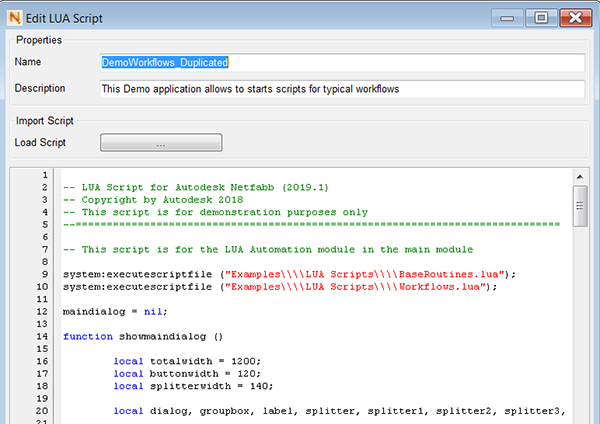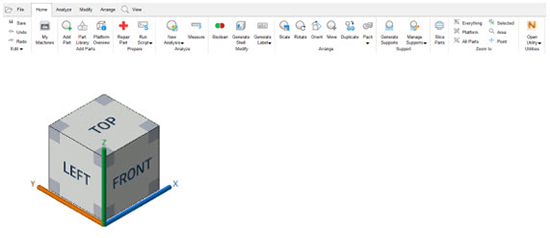Find out What’s New in Autodesk Netfabb 2019.1
Leading the list of updates are latticing, the new “CAD-friendly” interface, new machine integrations and some updates to Netfabb simulation.

Image courtesy of Autodesk.
Latest News
December 14, 2018
Autodesk has released Netfabb 2019.1 with a number of enhancements, and leading the list of updates are latticing, the new “CAD-friendly” interface, new machine integrations and some updates to Netfabb simulation.
Netfabb 2019 brought manual latticing to customers subscribing at the Premium tier and now with 2019.1, Lattice Commander is live and out of tech preview, which means manual lattice editing is now fully functional. Also, for those subscribing to Netfabb Ultimate with access to Optimization Utility, you can now manually edit those FEA optimized lattices. Here are the highlights:
- improved skin generation for clean hollowing of models;
- tetrehedral mesh export to simplify validation workflows in external simulation packages;
- improved usability with drag & drop functionality of bodies between components;
- direct push from Optimization Utility: Edit nodes and beams of FEA optimized lattices in Lattice Commander; and
- new “CAD-friendly” interface.

With Netfabb 2019.1, you are presented with a new UI ribbon that should be more intuitive for those of you working in CAD, plus you will see the familiar view cube and in-canvas manipulators. Upon launch of Netfabb, you also have the opportunity to revert back to the traditional menu you already know.
Lua scripting available in Netfabb Ultimate can be helpful for repetitive tasks. Now with 2019.1, you will find new scripts for Lane Packing and Multi-Tray Packing.
Netfabb can control all Arcam machines, that workspaces for all existing SLM Solutions machines have been updated and workspaces have been added for the newest models: SLM 280.2 and SLM 800. New workspaces have also been introduced for the Xact metal XM200C and XM200S and the Sinterit Pro Lisa. Netfabb has integrated workspaces for over 100 machines, for every AM process.
A lot of validation and testing goes into Netfabb simulation with the goal of successful metal additive prints the first time, the company notes. 2019.1 introduces a few new updates to help:
- New material-based heat loss approximation. Previously you could choose between general heat loss approximation or material-specific heat loss approximation. This new simulation applies a material specific coefficient to give you increased accuracy, the company reports.
- Global Recoater Status Results: A new simulation type, you can now view results for recoater blade interference across the complete model in cases where recoater interference exists on multiple Z-heights.
- DED results viewing: Quickly jump to relevant results to save time post-processing DED simulations with the option to quickly change visualized results by Z-height, layer, time or result increment.
- Cloud simulation improvements: Cloud simulation was introduced earlier this year and now improvements have been made for cloud-based distortion compensation, faster cloud calculations and reduced results wait time.
Other Updates
There are Support Module improvements: Tested support scripts, tapered volume supports, fully automatic support update as parts are moved or rotated, and usability improvements.
Look for Custom Scene templates: Define custom start-up conditions for different machines.
Also highlighted are the Slice Distribution Statistics: Graph showing distribution of contour area through Z-axis provides a quick overview where closed contours (indicating a fully exposed area) are located across the slice stack.
Another enhancement is the automatic base plate creation: Create a foundation or “raft“ for parts based on their contour.
Sources: Press materials received from the company.
More Autodesk Coverage
For More Info
Subscribe to our FREE magazine, FREE email newsletters or both!
Latest News
About the Author
DE’s editors contribute news and new product announcements to Digital Engineering.
Press releases may be sent to them via [email protected].






